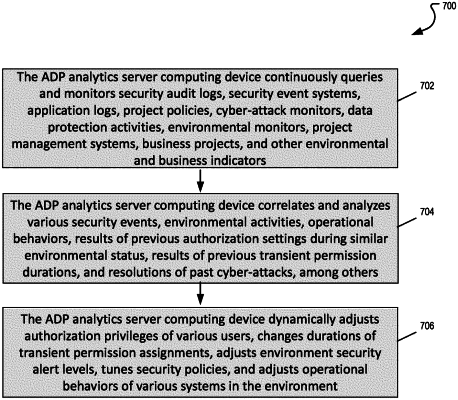| CPC H04L 63/105 (2013.01) [G06F 21/10 (2013.01); H04L 63/1416 (2013.01)] | 10 Claims |

|
1. A system comprising:
a network adapter to communicate with a computing network;
a non-transitory computer-readable medium; and
at least one processor to execute instructions stored in the non-transitory computer-readable medium to:
continually monitor the computing network for a condition that may trigger an authorization control modification for at least one particular user of the computing network, the condition comprising the at least one particular user moving from a first team to a second team;
determine that the condition has occurred in the computing network; and
dynamically and automatically modify at least one user authorization control for the at least one particular user responsive to the condition;
wherein the first team or the second team comprises one of a migration team, a technology deployment team, a disaster recovery testing team, or an auditing team; and
wherein dynamically and automatically modifying the at least one user authorization control for the at least one particular user comprises:
using machine-learning analytics to determine the at least one user authorization control, wherein the machine-learning analytics include previous security events indicating that one or more members of a first team were unable to access a needed resource; and
increasing an authorization level for members of the first team to provide access to the needed resource.
|